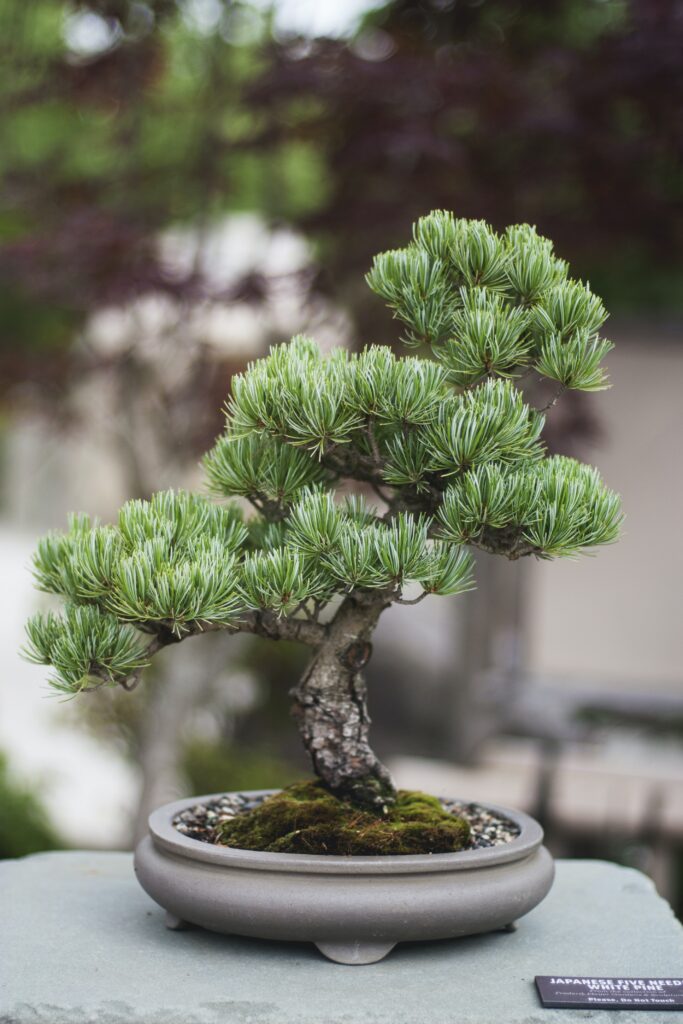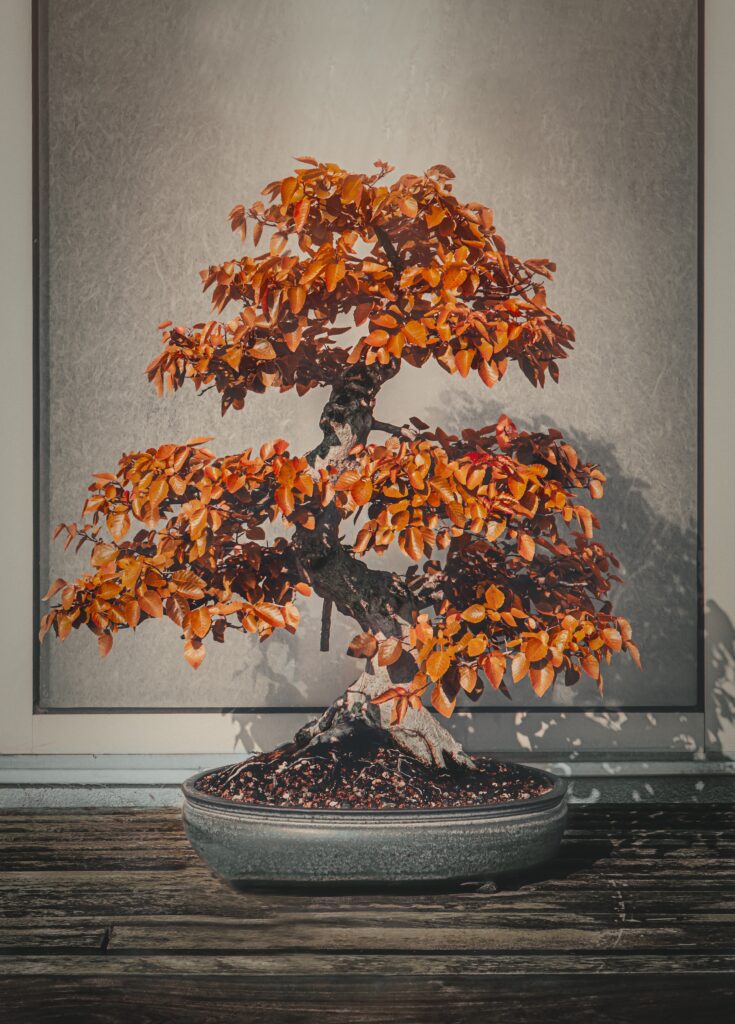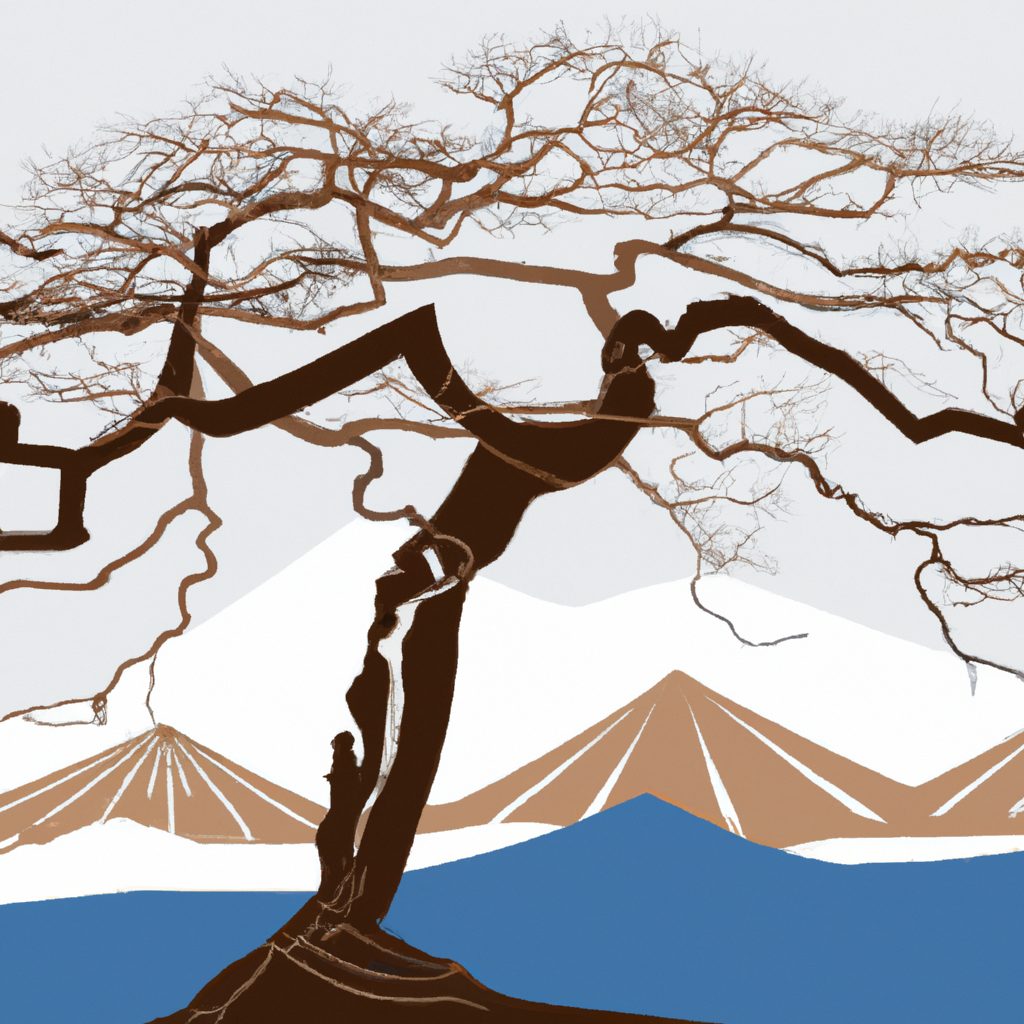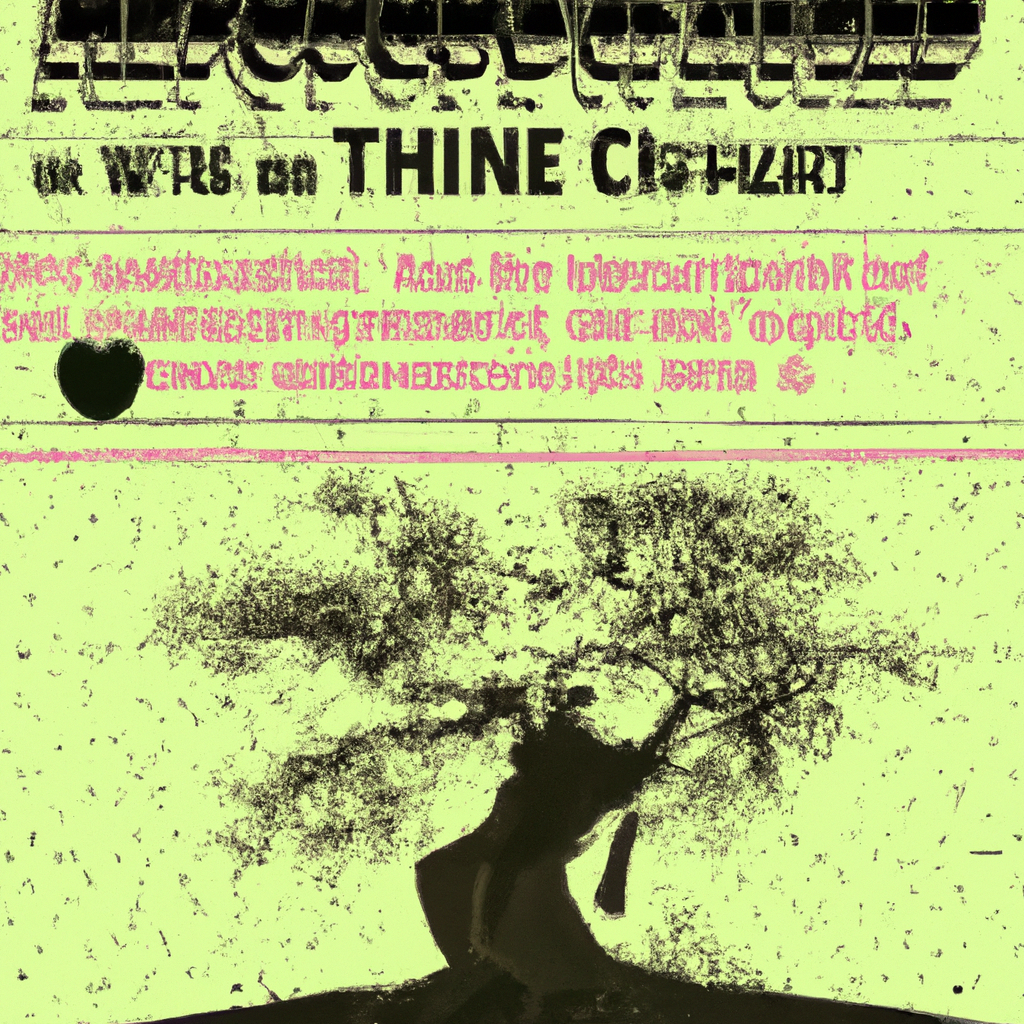
In the world of gardening, few things are as awe-inspiring as the resilience of bonsai trees. These miniature masterpieces of nature, meticulously shaped and sculpted over years, have a remarkable ability to thrive even in the most challenging circumstances. From withstanding harsh weather conditions to overcoming diseases, the stories of bonsai trees standing tall against all odds are nothing short of inspiring. Join us as we delve into the captivating tales of these resilient trees and uncover the secrets behind their tenacious survival.

The Importance of Resilience in Bonsai Growing
Bonsai growing is an art form that requires careful attention and nurturing. One of the most crucial qualities a bonsai tree can possess is resilience. Resilience refers to the ability of a tree to withstand and bounce back from adverse conditions, such as extreme weather, diseases, pests, and neglect. In the world of bonsai, resilience plays a vital role in the survival and development of these miniature trees. Understanding the concept of resilience, how it affects bonsai trees’ survival, and the factors that test their resilience is essential for every bonsai enthusiast.
Understanding the concept of resilience
Resilience in bonsai refers to the tree’s ability to adapt and thrive in less-than-ideal conditions. It encompasses the tree’s capacity to withstand stressors, such as changes in temperature, fluctuations in moisture levels, and limited resources. Resilient bonsai trees can recover quickly from setbacks and continue to grow and flourish. They possess a remarkable ability to bounce back from adversity and maintain their overall health and beauty.
How resilience affects the survival of bonsai trees
Resilience plays a significant role in the survival of bonsai trees. In nature, trees face numerous challenges, including harsh climates, pests, diseases, and competition for resources. Bonsai trees are no exception but face additional stressors due to their confined space and the meticulous care they require. Resilient bonsai trees have a higher chance of surviving and thriving in these conditions. They can withstand periods of neglect, recover from accidents, and bounce back from diseases and pests. Resilience is the key to the long-term survival and success of a bonsai tree.
Factors that test the resilience of bonsai trees
Several factors test the resilience of bonsai trees and determine their ability to adapt to adverse conditions. These include temperature fluctuations, moisture levels, exposure to sunlight, pests, diseases, and limited resources. Bonsai trees are exposed to various temperature extremes throughout the year, from freezing cold to scorching heat. They must also cope with changes in humidity levels and receive sufficient sunlight for photosynthesis. Additionally, pests and diseases pose a constant threat to the health of bonsai trees. Limited access to resources, such as water and nutrients, can also test the resilience of these miniature trees.
Historical Examples of Resilient Bonsai Trees
Throughout history, there have been incredible stories of bonsai trees demonstrating extraordinary resilience in the face of adversity. Several examples highlight the tenacity and will to survive of these miniature trees.
Survival stories from Hiroshima
One of the most inspiring stories of bonsai resilience comes from Hiroshima, Japan, where bonsai trees withstood the devastating atomic bomb in 1945. One particular tree, a Japanese white pine, survived the blast and became known as the “Hiroshima Survivor Tree.” Despite suffering severe damage, the tree continued to grow, symbolizing hope and resilience amidst unimaginable destruction. This bonsai tree serves as a powerful reminder of the strength of nature and its ability to endure even in the most challenging circumstances.
The resilience of ancient bonsai trees in China
In China, ancient bonsai trees, some dating back over a thousand years, have withstood the test of time and multiple dynasties. These living witnesses to history have survived wars, political upheavals, and changes in cultural practices. Their ability to adapt to changing environments and continued growth is a testament to their resilience. Many of these ancient bonsai trees are revered as national treasures and showcase the durability and longevity that can be achieved through proper care and cultivation.
Bonsai trees that have withstood natural disasters
Natural disasters, such as earthquakes, hurricanes, and floods, pose significant challenges to bonsai trees. However, there are numerous examples of resilient bonsai trees that have weathered these calamities and continued to thrive. For instance, after the devastating earthquake and tsunami in Japan in 2011, several bonsai trees were rescued from the wreckage and nursed back to health. Their survival and subsequent recovery represented a symbol of hope and resilience amidst the destruction.
Resilient Bonsai Species
Not all bonsai species possess the same level of resilience. Some species are naturally more robust and better equipped to handle adverse conditions. It is essential to choose the right species when cultivating bonsai, especially if you are a beginner or reside in challenging climates.
Popular bonsai species known for their resilience
Several bonsai species are known for their resilience and adaptability. These include but are not limited to the juniper, pine, maple, elm, and ficus. Junipers, for example, are highly resilient trees that can endure drought and cold temperatures. Pines are also robust and can withstand harsh weather conditions. Maples exhibit resilience through their ability to thrive in different climates. Elm trees are known for their ability to recover from pruning and respond well to heavy styling. Ficus trees are popular due to their ability to adapt to a wide range of environments. Choosing one of these species can provide a good foundation for cultivating a resilient bonsai tree.
Traits and characteristics of resilient bonsai species
Resilient bonsai species often share certain traits and characteristics that allow them to handle adverse conditions. These can include a thick trunk, sturdy branches, and dense foliage. Trees with robust root systems and efficient water and nutrient absorption are more likely to be resilient. Additionally, species that have evolved to thrive in specific climates or habitats tend to exhibit greater resilience when grown as bonsai. Understanding these traits and selecting bonsai species with these characteristics can greatly enhance the overall resilience of your miniature tree.
Best practices for growing resilient bonsai trees
To ensure the successful cultivation of resilient bonsai trees, it is crucial to follow a few best practices. First and foremost, provide proper care and attention based on the specific needs of your chosen species. This includes regular watering, appropriate fertilization, and ensuring optimal sunlight exposure. Avoid over-pruning or styling, particularly for younger or newly acquired bonsai trees, as this can put unnecessary stress on the tree. Regularly inspect your bonsai for signs of pests or diseases, and promptly address any issues. Finally, create a conducive environment for your bonsai’s growth, with well-draining soil, adequate air circulation, and protection from extreme weather conditions.
Adapting to Challenging Environments
Bonsai trees are not limited to traditional garden settings. With the right knowledge and techniques, they can thrive in various challenging environments.
Bonsai trees thriving in urban settings
Urban environments often present unique challenges for plant growth, such as limited space, pollution, and restricted access to natural light. However, bonsai trees have proven their resilience in adapting to urban settings. With proper care, urban gardeners can successfully cultivate bonsai trees on balconies, rooftops, or even indoors. By selecting suitable species, providing adequate light, and ensuring proper watering and ventilation, bonsai enthusiasts can create thriving miniature landscapes within the concrete jungles.
Overcoming extreme temperatures and weather conditions
Bonsai trees are subject to extreme temperatures and weather conditions, which can be detrimental if not properly addressed. In areas with harsh winters or scorching summers, protecting bonsai trees from temperature fluctuations is crucial. Techniques such as winter protection with insulation or moving them to sheltered locations can help shield the trees from extreme cold or heat. For tropical species grown in colder regions, providing artificial heat sources or creating microclimates can aid in overcoming temperature challenges.
Coping with limited space and resources
One of the unique appeals of bonsai is its ability to thrive in restricted spaces. Bonsai cultivation allows individuals living in apartments or homes with limited garden areas to experience the joys of tending to living trees. By utilizing appropriate container sizes and employing techniques like root pruning and careful styling, bonsai trees can flourish in small spaces. Conservation of resources, such as water, can also be achieved through efficient watering methods, such as the use of drip systems or manual watering techniques that prevent excessive water loss.

Rescue and Restoration: Nurture in Adversity
Even the most resilient bonsai trees may encounter periods of neglect, damage, or stress. However, with proper care and nurturing, these trees can be revitalized and regain their resilience.
Successful stories of rescuing bonsai trees from neglect and damage
There are countless success stories of neglected and damaged bonsai trees being rescued and restored to health and vitality. Whether it was due to neglect, improper care, or unfortunate accidents, these trees underwent significant transformation under the skilled hands of dedicated bonsai enthusiasts. By providing the necessary attention, such as repotting, soil rejuvenation, and careful pruning, these previously struggling trees have been given a chance to thrive once again.
Techniques for restoring and revitalizing stressed bonsai trees
Restoring and revitalizing stressed bonsai trees requires a thoughtful and patient approach. Techniques such as careful pruning to remove dead or damaged branches, wiring to reshape the tree’s structure, and repotting to refresh the soil and root system can all contribute to the tree’s recovery. Additionally, providing proper sunlight, water, and fertilization based on the specific needs of the tree can help restore its health and vigor. Regular monitoring for signs of improvement and adjusting care accordingly is essential during the restoration process.
Building resilience through attentive care and recovery
Nurturing a resilient bonsai tree is an ongoing process that requires attentive care and recovery strategies. Regular care and maintenance, including proper watering, pruning, and fertilization, contribute to the overall strength and resilience of the tree. When faced with stressors such as pests, diseases, or adverse weather conditions, swift action to address and mitigate these challenges is crucial. By implementing a comprehensive care plan and responding promptly to any signs of distress, bonsai enthusiasts can build resilience in their trees and ensure their long-term survival.
The Role of Bonsai Artists and Enthusiasts
Bonsai artists and enthusiasts play a vital role in promoting resilience in bonsai trees and cultivating a strong and supportive community.
Promoting resilience through proper techniques and practices
Bonsai artists and experienced enthusiasts serve as guides and mentors to newcomers in the art of bonsai cultivation. By sharing their knowledge of proper techniques and practices, they promote resilience in bonsai trees from their very inception. Teaching beginners about appropriate soil mixtures, correct wiring and pruning techniques, and providing guidance on watering and fertilization practices helps lay the foundation for the tree’s resilience. Through expert mentoring, bonsai artists empower others to navigate the challenges of growing and caring for bonsai trees.
Educating and inspiring others in the art of cultivating resilient bonsai
Education plays a crucial role in fostering resilience in bonsai trees. Bonsai artists and enthusiasts often organize workshops, demonstrations, and educational events to impart their knowledge and inspire others in the art of cultivating resilient bonsai. These events provide a platform for learning about best practices, understanding the importance of resilience, and gaining insight into the trials and triumphs of growing miniature trees. By sharing their experiences and techniques, bonsai artists contribute to the growth and community of resilient bonsai enthusiasts.
Collaboration and knowledge-sharing in the bonsai community
The bonsai community thrives on collaboration and knowledge-sharing. Bonsai artists and enthusiasts actively engage in forums, online communities, and local clubs to exchange ideas, share experiences, and offer support to fellow bonsai growers. Through this collaborative environment, individuals can learn from one another, discuss challenges, and find innovative ways to enhance the resilience of their bonsai trees. By collectively contributing knowledge and experience, the bonsai community strengthens the collective resilience of bonsai growers worldwide.

Cultural Symbolism of Resilient Bonsai Trees
Bonsai trees hold deep cultural symbolism for many societies, serving as representations of endurance, power, and human ingenuity.
Bonsai as a representation of endurance and power
In many cultures, bonsai trees are seen as symbols of endurance and power. The ability of these miniature trees to withstand adversity and thrive in challenging conditions mirrors the strength of the human spirit. Bonsai trees often serve as reminders of resilience, encouraging individuals to persevere and overcome obstacles in their own lives. They embody the idea that even in the face of adversity, there is beauty and the potential for growth and transformation.
Iconic bonsai trees as symbols of resilience
Certain bonsai trees have achieved iconic status due to their resilience and historical significance. These trees are revered for their ability to survive the test of time, often outliving their caretakers and witnessing generations come and go. They serve as living testaments to the resilience of nature and the indomitable spirit of the human endeavor to cultivate and preserve life in miniature form. These iconic bonsai trees inspire awe and admiration and continue to leave a lasting impact on those who encounter them.
The spiritual connection between bonsai and resilience
In various spiritual traditions, the practice of bonsai cultivation is seen as a way to connect with nature and cultivate resilience both within oneself and the natural world. The meticulous care and nurturing of bonsai trees reflect the delicate balance between human intervention and the inherent resilience of nature. Bonsai cultivation becomes a meditative practice, teaching patience, perseverance, and resilience. The spiritual connection between bonsai and resilience encourages individuals to appreciate the beauty and strength that can be found in the most challenging circumstances.
Exploring the Science Behind Bonsai Resilience
While bonsai cultivation is an art form, there is also a scientific aspect to understanding the resilience of these miniature trees.
Understanding the physiological adaptations of bonsai trees
Bonsai trees have undergone significant physiological adaptations to survive and thrive in their confined and manipulated form. These adaptations include smaller leaf size, reduced internodal spacing, and slower growth rates compared to their full-sized counterparts. These modifications enable bonsai trees to maintain their miniature proportions and adapt to the limited resources available to them. Understanding these physiological adaptations is fundamental to cultivating resilient bonsai trees and ensuring their overall health and longevity.
Research on the impact of stress and resilience in bonsai growth
Scientists and researchers have conducted studies to understand the impact of stress on bonsai trees and their resilience mechanisms. These studies focus on various stressors such as drought, extreme temperatures, pests, diseases, and pruning. They investigate the physiological and biochemical responses of bonsai trees to stress and how these responses contribute to their overall resilience. By gaining a deeper understanding of the effects of stress and the mechanisms of resilience, researchers can provide valuable insights to bonsai enthusiasts, enabling them to cultivate more resilient trees.
Applying scientific knowledge to enhance resilience in bonsai
The scientific understanding of bonsai resilience can be applied to enhance the overall resilience of cultivated trees. By utilizing research findings, bonsai enthusiasts can make informed decisions in selecting appropriate species, implementing proper care techniques, and responding effectively to stressors. For example, knowledge about the response of bonsai trees to particular stressors can guide the choice of protective measures during extreme weather events. Applying scientific knowledge in the cultivation of bonsai fosters a more data-driven and informed approach, ultimately leading to healthier, more resilient trees.

Resilience in the Face of Pests and Diseases
Pests and diseases pose significant threats to the health and resilience of bonsai trees. However, with appropriate preventive measures and natural control methods, bonsai enthusiasts can safeguard their trees against these challenges.
Bonsai trees conquering common pests and diseases
Bonsai trees, like any other plant, are susceptible to various pests and diseases. Common pests include aphids, spider mites, scale insects, and caterpillars, which can cause damage to leaves, stems, and roots. Diseases such as root rot, powdery mildew, and fungal infections can also threaten the health of bonsai trees. However, with diligent monitoring, early detection, and appropriate treatment, bonsai trees can overcome these challenges and maintain their resilience. Regular inspection, removing affected parts, and using organic pest control methods contribute to keeping the bonsai tree healthy and robust.
Preventive measures to maintain the resilience of bonsai trees
Preventing pests and diseases is critical to maintaining the resilience of bonsai trees. Implementing preventive measures reduces the likelihood of encountering these challenges in the first place. Some effective preventive measures include maintaining proper hygiene in the bonsai’s environment, ensuring good air circulation, and practicing careful watering to prevent over saturation or waterlogging. Additionally, regularly inspecting the tree for signs of pests or diseases and promptly addressing any issues can prevent their spread and protect the overall health and resilience of the bonsai.
Natural methods for controlling pests and diseases
In line with the principles of organic gardening, natural methods for controlling pests and diseases are preferred in bonsai cultivation. These methods include introducing natural predators, such as ladybugs or predatory mites, to target pests, using neem oil or insecticidal soap sprays to treat infestations, and employing cultural practices like improving soil drainage and providing adequate sunlight to prevent disease development. Using natural control methods ensures the safety of the bonsai tree, the environment, and encourages a balanced ecosystem that supports the tree’s overall resilience.
Overcoming Challenges in Bonsai Exhibition
Bonsai exhibitions and competitions provide an opportunity to showcase the artistry and resilience of bonsai trees. However, they come with their own set of challenges that bonsai enthusiasts must navigate to protect their trees’ well-being.
Preparing bonsai trees for display challenges
Preparing bonsai trees for exhibition requires careful planning and anticipation of potential challenges. It is essential to ensure the trees are healthy, groomed, and styled appropriately for the event. Timing is crucial, as trees need sufficient recovery time after aggressive styling or repotting. Ensuring stable soil moisture, proper pest and disease control, and protection from extreme temperature fluctuations during transit and display are vital considerations. Adequate preparation guarantees that the bonsai tree remains resilient throughout the exhibition and can be showcased in its best form.
Protecting the resilience of bonsai during exhibitions and competitions
During exhibitions and competitions, it is essential to protect the resilience of bonsai trees while still allowing them to be displayed and admired. Maintaining optimal environmental conditions is critical for the tree’s well-being. This includes providing adequate lighting, humidity control, and proper water management. Protecting bonsai trees from excessive handling or accidental damage is crucial, as the delicate balance of branches and foliage can be disrupted easily. By ensuring the trees are handled with care and safeguarded from potential hazards, their resilience can be preserved and their longevity ensured.
Managing expectations and learning from setbacks in bonsai shows
Participating in bonsai exhibitions and competitions may involve setbacks and disappointments. Individual trees may not receive accolades or recognition despite their beauty and resilience. However, it is essential to manage expectations and view these setbacks as opportunities for growth and learning. Each exhibition provides insights on further enhancing the resilience and presentation of bonsai trees. Professionals and enthusiasts can reflect on the judges’ feedback, engage in constructive discussions, and exchange ideas on improving their techniques for future exhibitions. The ability to learn from setbacks and continue striving for improvement is a testament to the resilience of bonsai artists and their trees.
In conclusion, resilience is a vital attribute for bonsai trees. Understanding the concept of resilience, its impact on the survival and growth of bonsai trees, and the factors that test their resilience is crucial for every bonsai grower. Historical examples, resilient bonsai species, adapting to challenging environments, rescue and restoration, the role of bonsai artists and enthusiasts, cultural symbolism, scientific insights, and overcoming pests, diseases, and exhibition challenges all contribute to fostering resilience in bonsai cultivation. By cultivating resilience in bonsai trees, enthusiasts can create living works of art that not only survive the odds but thrive in adversity, inspiring generations to come.
